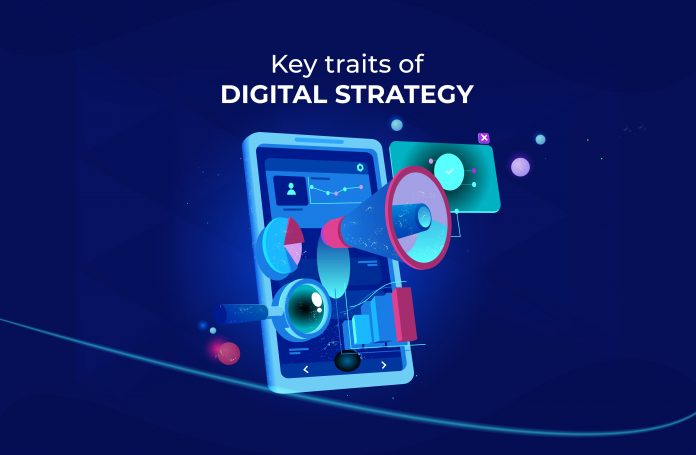Before we delve into the nitty-gritty of what defines a digital strategy let us first understand what digital strategy really is.
The application of digital technologies to a brand or a business model to form new differentiating business capabilities is called digital strategy. As we move to a more digital world, all business strategies will eventually become digital strategies.
The definition of digital strategy is ever-evolving. It majorly focuses on implementing new technology to increase business performance, by creating new products or revising current processes. It helps give the brand or business the direction to create a competitive edge with technology. This includes tweaks made to business models, as new technology helps innovative businesses to provide services that weren’t previously feasible.
In today’s increasingly digital age, technology and business have integrated in a way that they are not just hardware or software anymore. As digital technology becomes more accessible, companies will move a step forward in the journey of digital transformation.
A digital strategy is the first step in a process that will eventually lead to the creation of a proper plan or roadmap. While the specific tactics in a strategy can change over time there should also be an idea or a big picture to your understanding of what digital strategy means for your brand or business.
Now that we have an understanding of what digital strategy is let’s take a look at what are the various components or characteristics of a digital strategy.
- Picking out the main insight
— This is arguably the most important part of creating a digital strategy as focusing on the main insight will let you grab hold of what works and doesn’t work in your brand.
You must be careful while picking what insights should be the main focus of your digital strategy as a misstep here could eventually spell doom for your brand.
- Creating an Opponent
— In a digital strategy having a set opponent, even an imaginary one can help you focus on the positives of your brand against the negatives of your opponents. Brand Banter through various social media channels is now a common sight within a digital strategy. Brands that are well aware of their potential threats can turn them around and convert them into opportunities for brand building. This could be implemented proactively or reactively depending on the situation.
An old-school example of this would be Coke vs Pepsi.
- Take a Tactical Approach
— Digital strategy will usually incorporate a process for deciding whether new technology will benefit or grow the current business. If you fear that your brand is lacking on the digital front, it can be very tempting to rush headfirst into a project without thinking about how and if it fits your current digital strategy. By taking a measured tactical approach, you can save resources and time on initiatives that don’t cater to your brand’s goals and priorities.
- Future Proof
— The goal of a digital strategy is also to create a stable foundation for the brand or business. This means creating processes that can continue to reinvent themselves as necessary to keep up with changes in technology and consumer expectations. Digital strategy should be futureproofed enough to drive brands past changes in the technology in a way that continues to give the brand an edge over its competitors.
These are the various characteristics that will define your digital strategy.
If you want help building a digital strategy, you should check out Chimp&z Inc. a digital marketing agency in Mumbaithat also provides online marketing services.
————————
Author:
Gabriel Fernandes is a Copywriter at Chimp&z Inc, with experience in writing and strategy. They are interested in Mythology, Poetry and can be found petting stray cats on the streets of Mumbai.

















